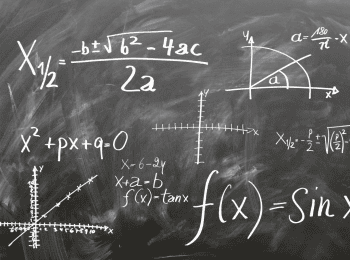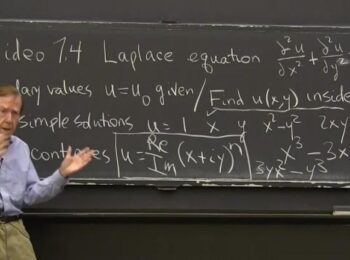If someone were to ask you about the cube rootof a number, you might think “that’s an easy question!” but if someone asked what a cube root function is, it may be more difficult to explain or even understand.
In this article, we will discuss the function of a cube root, how it differs from the square root function, as well as a few helpful examples.
A Quick Look At The Cube Root
If it’s been a while since you’ve taken a math course, it’s always a good idea to break down a formula, concept, or function before you start working on a more complex problem.
Allowing yourself to “dissect” a math problem may take a little longer to solve, but you have a better
chance and understanding the material better. You’re also more likely to have success when solving more complex problems as you advance in your mathematics course.
Even if your math skills are a little “rusty,” you probably know that a number that’s cubed simply means that it is multiplied by itself three times. For example, (or 3 x 3 x 3) is 27.
The cube root can be best described as “the number which produces a given number when cubed.” This simply means that we break down the product to how it originated. Using the same simple example above, the cube root of 27, or , is 3 (since 3 x 3 x 3=27).
Finding out the cube root is easy enough, especially when you have a calculator handy, but what about the cube root function? Many people get confused by this, which is why we’ll move on to briefly explaining function families in mathematics.
A Cube Function Family
There are often many challenging concepts to “wrap your head around” in mathematics and a function family is one of them. Function families are groups of functions with similarities. They are easier to graph when you become more familiar with the parent function, which is also known as the basic example of the form.
Like most math equations, formulas, and problems, it’s easier to solve them when you familiarize yourself with the basics. A parent function can be a great starting point and a reminder to what you need to do to solve a math problem.
There are many function families, but the cubing function, which is often used in physics to measure cubic units of volume, has the parent function of f (x)=.
Knowing what we already know about cube and cube root, you might guess that the parent function of cube root is f(x)=
You may also see the function noted as y=
Do you notice the similarities and differences between the two parent functions in relation to cube and cube root? Keep in mind that the formulas are just the basics of how to solve a problem, but when using the root function, you will have more elaborate formulas within the parent cube root function.
The Differences Between Square Root and Cube Root Functions
Before we work through a few examples using the function of the cube root, it’s important to determine the differences between square and cube root functions.
Even though much of today’s graphing relies heavily on graphing calculators, you should still know the unique features of each root function and how to work your way through a problem without using a calculator (so that if you were handed a piece of graph paper, you could easily solve a problem).
You might be wondering why it’s important to discuss the features of square root and cube root functions, but after looking at your graph, you’ll notice very different outcomes. Here are some features of the parent function of a square root:
Here are some notable features of the parent function of a cube root:
As you can see, the biggest difference between the two is that you can use negative numbers when using the cube root, which means the graph may have many transformations such as reflections or a vertical stretch (or shrink).
Examples of Cube Root Function

Now that we’ve discussed a few of the primary differences between the square and cube root functions it’s time to take a look at a few examples. Remember, various examples, familiarizing yourself with the parent function, and a good amount of practice can help you get better at problems using the function of a cube root.
Example #1![]()
A math teacher introduces his students to the function of a cube root and assigns the following problem: y= -. He asked his students which quadrant or quadrants the graph is in.
Knowing what you do about the function of a cube root, and envisioning the quadrants on a piece of graph paper, can you guess which quadrants will have the graph?
Student B says that since all y values are negative, the graph is in the 3rd and 4th quadrants. Student C says that the graph is in the 2nd, 3rd, and 4th quadrant, while Student D says the graph is present in all quadrants.
After graphing the function y= -you might notice that the domain is all real numbers (positive and negative), which means that all quadrants are possible. Based on this, you might assume that Student D is correct, but keep in mind that for the positive values of x, y is negative (don’t forget the negative sign in front of the cube front); Student C is correct.
Example #2![]()
Consider graphing the cube root function, y= 3.
Start by sketching the graph of y= 3. Your origin points should be (-1, -3) and (1,3). As you solve the function (as listed above), h= -2 and k=-1. This will shift your graph to the left by 2 units and down 1 unit. Your results should be a graph that passes through the points (-3,-4), (-2,-1), and (-1,2).
Additional Examples of Cube Root Function
As we noted earlier, practice makes it easier to understand the function of cube root. Even if you use a graphing calculator in class (and many instructors require one), don’t hesitate to solve the function on regular graph paper, especially if you’re a hands-on learner.
Here are some more functions to try out (find answers here):
y=
y=
y= 2- 3
y= 4- 8
Tips For Finding Cube Root Function On Your Graphing Calculator

If you use a popular graphing calculator like the TI-83/84, you might need a little help figuring out how to solve the function of the cube root. We’ll give you a few tips to help you get started.
For a complete set of tips for your graphing calculator, which includes the Casio FX Graphing calculator, check out these helpful steps.
Final Thoughts
Whether or not your math skills are advanced,you might benefit from solving simple problems rather than jumping into complex equations. Remember, familiarizing yourself with a parent function and practice can help you succeed and feel more confident as you progress in your courses.
Starting out easy and working your way up to something more challenging can be helpful, especially if you are helping someone else with math or need to be able to explain how to solve a problem.
Even if you are currently enrolled in a math course, don’t hesitate to watch online tutorials and videos to help you understand a concept better. Watching other instructors can give you another perspective that can aid to your learning.
The video may take a few seconds to load.
Having trouble Viewing Video content? Some browsers do not support this version – Try a different browser.






